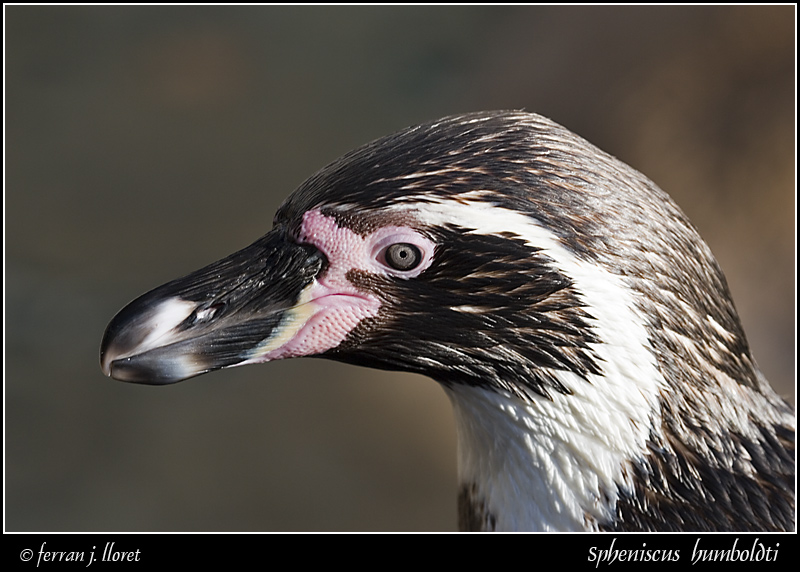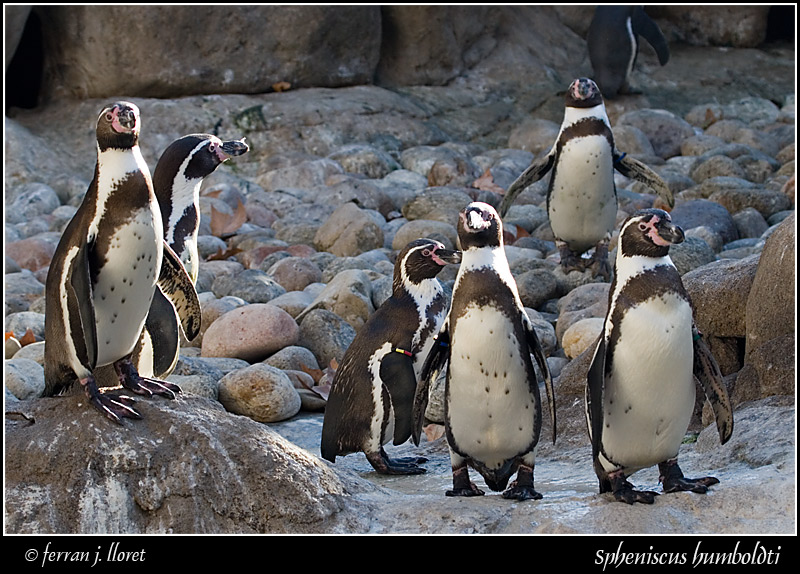The Humboldt Penguin (Spheniscus humboldti) is a South American
penguin, breeding in coastal Peru and Chile. Its nearest relatives are
the African Penguin, the Magellanic Penguin and the Galápagos Penguin. The penguin is named after Alexander von Humboldt, a naturalist and explorer who first described the animal to western observers.
Humboldt Penguins are medium-sized, black and white penguins, growing 65-70 cm tall. They have a black head with a white border running from behind the eye, around the black ear-coverts and chin, to join on the throat. They have blackish-grey upperparts and whitish underparts, with a black breast-band extending down the flanks to the thigh. They have a fleshy-pink base to the bill. Juveniles have dark heads and no breast-band.
This penguin nests on islands and rocky coasts, burrowing holes in guano and sometimes using scrapes or caves.
The current status of this penguin is vulnerable, due to a declining population caused in part by over-fishing. Historically it was the victim of guano over-exploitation. The current population is estimated at between 3,300 and 12,000.
Information source
IUCN red list
This shot is taken in Parc Zoològic de Barcelona in Catalonia, Was taken full frame.
|

